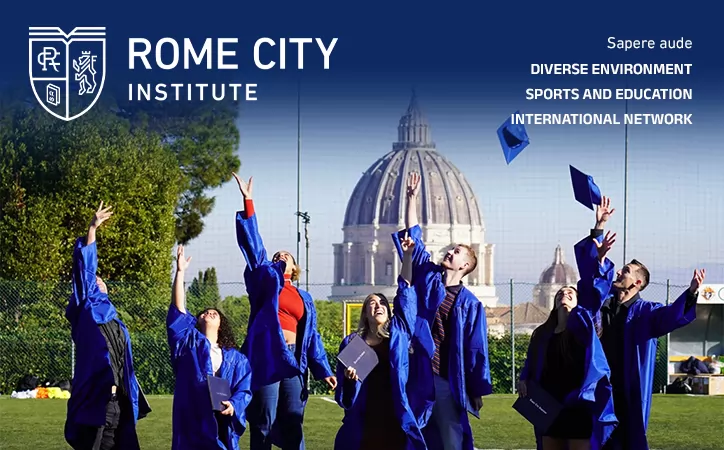What does Nationalism mean to Italy?
Italy has a complicated history with nationalism. The post-World War II Italian Constitution lays out strong protections against the revival of fascism, a measure that strives to prevent the rise of another Mussolini-esque dictatorship. As a result, articulating and embracing a national identity and national values can be difficult.
Italian cities, regions, and provinces have strong, celebrated identities that often conflict with one another. Traditional nationalism, on the other hand, defined by pride in Italian excellence and independence, can be found in conservative political groups to varying degrees. This type of nationalism is generally connected to Euroskepticism and anti-immigration and may be intertwined with conservative Catholic values.
But in the aftermath of the pandemic, the European Union is set to provide a massive stimulus package to Italy, giving the country a chance to revitalise itself and, by extension, the EU. Consequently, skepticism of Italy’s membership in the EU seems to be fading. So the question remains--what does nationalism mean to Italy?
The birth of nationalism in Italy: a not-so-distant history
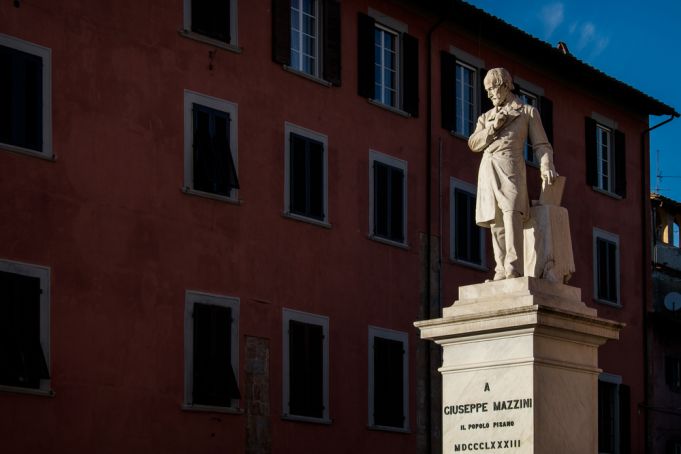
Ph: Giuseppe Mazzini statue in Pisa
Nationalism in Italy was born out of the sentiment for Italy’s unification. Formally unified in 1861, the vast majority of the peninsula’s history oversaw independent states governed by conflicting foreign forces. As historian Alexander Grab explains in Napoleon and the Transformation of Europe, before Napoléon’s invasion in 1796, there were ten Italian states: the Kingdom of Sardinia, the Duchy of Milan, the Republic of Venice, the Republic of Genoa, and the Republic of Lucca, the Papal State, the Duchy of Modena, the Duchy of Parma, the Grand-Duchy of Tuscany, and the Kingdom of Naples. States were drastically different from one another in terms of culture, economic layout, laws, language and dialect, and currency--there was no semblance of unity on the peninsula.
In fact, as Grab says, “Provincial and municipal rivalries and competition between city and country intensified the diversity.” The first inkling of a unified identity for states in Italy came about as a result of Napoléon Bonaparte’s conquering of much of the peninsula, but regional differences remained strong. In 1815, Napoléon was defeated and Italian states were annexed by Austria, and the illusion of unity was again erased.
In the 1820s and 1830s, political activists and thinkers began theorising about Italian unification as a means of escaping Austrian control. Activist Giuseppe Mazzini was a key figure in promoting unification and legitimising nationalist sentiment. Mazzini rallied for the unification of the peninsula under a vision of ancient Roman values.
As scholar Aaron Gillette describes in his book Racial Theories in Fascist Italy, Mazzini’s vision of nationalism was rooted in the perception of ancient Rome as the birthplace of modern civilisation, responsible for many values and practices in Western society. This concept is known as Romanità. Mazzini envisioned the peninsula unified as a republic, governed by the values of the Catholic Church, which he believed aligned with the values of Romanità, but outside the Church’s direct influence. Mazzini earned the nickname “The Beating Heart of Italy” and in 1831, he organised a political movement called Young Italy.
Young Italy was devoted to Italian nationalism and fighting for a unified republic. Though the movement gained momentum among young Italians, it ultimately failed after numerous unsuccessful insurrections. Nonetheless, the sentiment of Mazzini and the movement would live on through his writings and legacy.
Nationalism was especially prominent during the Risorgimento, the fight for Italian unification that took place from 1848 to 1861. During the Risorgimento, Italian states fought for their unification as a means of escaping Austrian control. As described in Encyclopaedia Britannica, different groups had differing ideas of what a unified Italy should look like.
As represented by Young Italy, some Italians envisioned Italy as a democratic republic. Others wanted the country to be under papal control, while another group preferred the idea of a monarchy under the House of Savoy, the ruler of the Piedmont-Sardinia state. Despite these differences, Romanità played a key role in motivating the Risorgimento and fostering a sense of unity and purpose between Italian states.
Giuseppe Garibaldi, a charismatic activist and masterful military general, was another Italian nationalist who influenced the Risorgimento. Garibaldi’s perception of nationalism was greatly influenced by Mazzini. According to Encyclopaedia Britannica, as a young sailor in the Piedmont-Sardinia navy, he became obsessed with the idea of Italian unification.
Like Mazzini, he dreamt of an Italy unified as a republic--but unlike Mazzini, he ultimately aligned with Piedmont-Sardinia and fought for the unification of Italy as a monarchy, believing it was the most reliable means of escaping Austrian control. According to historian Denis Mack Smith, a writer for Britannica, the majority of the military victories during the Risorgimento were led by Garibaldi. This military precision, combined with Garibaldi’s unwavering patriotism and personal charm, made him a celebrated icon of Italian nationalism. Smith writes, “the object of his nationalism was always the liberation of peoples and not patriotic aggrandizement.”
Eventually, the House of Savoy assumed leadership over the unification initiative and fought with the help of France to free Italy from Austrian control. In 1861, the peninsula was formally unified as the Kingdom of Italy, ruled by King Vittorio Emanuele II. Though pride in Romanità and collective calls for unification had been rampant during the Risorgimento, after unification, there was still no cohesive Italian identity. As Massimo D’Azeglio, former Prime Minister of Sardinia said after Italy’s unification: “We have made Italy. Now we must make Italians.”
Nationalism or parochialism?
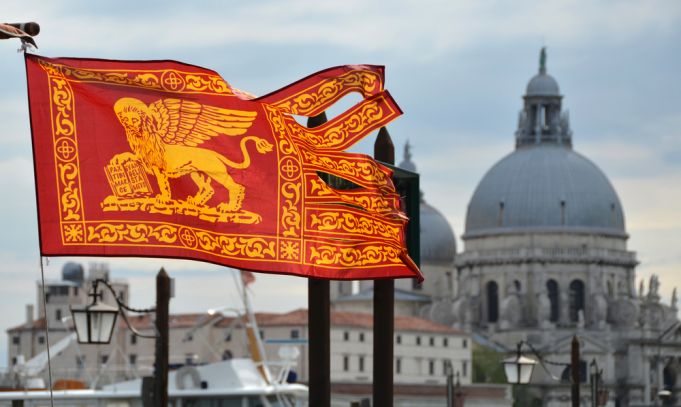
Ph: Serenissima Republic of Venice flag
Even after Italy was formally unified, each region held fast to its traditional culture, customs, and dialect. Demonstrating both the tenacity of provincial identity and the youth of Italy’s unity, these differences have carried into modern Italian society. As described on the Italian Language Blog by writer Serena, Italians frequently identify themselves by their regional identity, not their nationality.
This concept of Italian parochialism is known as campanilismo. The term “campanilismo” is derived from campanile, meaning bell tower or the tallest monument in a city, town, or region. According to the Italian Language Center, “‘Campanilismo’ best conveys the notion of identity in that an Italian feels himself first and foremost a citizen of the town and region in which he was born.”
Because former Italian states had spent centuries under conflicting rulers, these provincial differences resulted in tensions, and in extreme cases, rivalries. As Stelios Marathovouniotis points out in an article for the Versed, these rivalries can be intensified by sports culture. For example, while the rivalry between the Napoli and Juventus football clubs is superficially about football, it reinforces the tension between Turin, representative of the wealthy North, and Naples, representative of the poor South.
Marathovouniotis writes, “Traditionally, Napoli fans have been subjected to chants referring to crime, poverty and cholera outbreaks in the city.” This tension has existed since the pre-unification days.
National identity defined abroad
According to scholar Lorella Viola in her article “The Media Construction of Italian Identity,” the tension between the North and the South was one of Italy’s defining features in the decades following unification. The sentiment of the Risorgimento had been based around helping the entire peninsula reach its potential, but when the House of Savoy became the head of the Kingdom of Italy, this was not the case. Viola writes, “After the unification, the already dramatic economic situation of the South of Italy considerably worsened.
This was due to a disproportional tax system imposed to the southern provinces that completely paralysed their already stagnating economy and enlarged the economic gap between North and South.” As a result, tensions between the prosperous North and the neglected South were especially high, and many Southerners fled to the United States in search of better conditions and opportunities.
In the United States, Southern Italians were met with prejudice and discrimination. They were stereotyped as being messy and uncivilised in comparison to wealthier Italian and European immigrants, which ostracised them as an ethnic community. They clung to familiarity through Italian-language newspapers, as Viola describes. She writes, “Because they were mostly published in Italian, diasporic newspapers… served as powerful tools of language retention and, particularly in the case of mainstream publications, also of national identity construction and preservation.” Despite provincial differences on the Italian home front, one theory is that these newspapers evolved to promote a vision of a unified national Italian identity in order to appeal to all Italian immigrants in the United States, thus increasing readership and profits.
This vision directly contradicted campanilismo and influenced Italian immigrants to unify as a singular ethnic group with shared values and practices. Through these diasporic conditions and the instinct to hold on to culture, a cohesive definition of “Italianness” was constructed. This definition, which revolved around a shared general language, the celebration of Italian historical figures, and racial cohesion, could be understood by those within the global community and, to some extent, Italians in Italy. Viola writes, “Even if the exaltation of a national identity may have not always been sincere, the celebration of italianità [italianness] facilitated the construction of a shared national identity, helped Italian immigrants overcome cultural divisions, and provided the Italian community with greater visibility.”
Nationalism becomes fascism
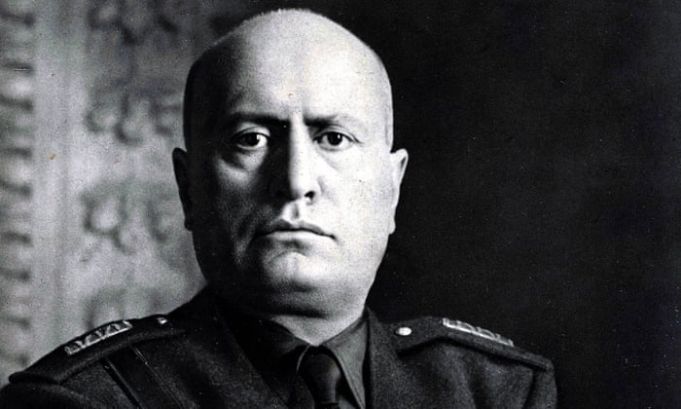
Ph: Benito Mussolini
In the first quarter of the 20th century, fascism took hold in Italy, led by dictator Benito Mussolini and his National Fascist Party. Italian fascism crafted a vision of Italian identity that was severely bound to Romanità and the momentum of the Risorgimento.
According to the fascist narrative, the Risorgimento was necessitated by Romanità. As scholar Romke Visser writes, “The Risorgimento was conceived as a 'historical necessity', brought about by (divine) providence, in order to secure the success of the 'civilizing mission', which was held to be the 'universal' vocation of the Roman-Italian race.” Mussolini presented his dictatorship as a continuation of this mission. Accordingly, the imagery and symbolism of Italian fascism harkened back to ancient Rome.
Visser writes, “'Roman' symbols and rhetoric, 'martial' architecture and sculpture, the 'Roman' salute, the passo romano (the Italian version of the German goose-step) and so on were part of a very efficient semiotic language intended to arouse popular enthusiasm for fascist imperialism.” Mussolini’s rhetoric also embraced ancient Roman values of discipline and power, and, as described by historian Andrea Giardina “action and intuition.” As Visser describes, Romanità was a sophisticated tool for crafting a nationalistic narrative; through its historical significance and ties to the Risorgimento, it attracted Italian intellectuals as well as uneducated but enthusiastic patriots.
Described by scholars Rosario Forlenza and Bjørn Thomassen in their article “From Myth to Reality and Back Again: The Fascist and Post-Fascist Reading of Garibaldi and the Risorgimento,” after Mussolini’s March on Rome and subsequent capturing of the future capital, he outlined the values of Romanità and Risorgimento, saying: “But if Mazzini and Garibaldi tried three times to reach Rome, and if Garibaldi had presented his redshirts with the tragic and inexorable dilemma of ‘Rome or death’, this signifies that for the men of the Italian Risorgimento Rome had an essential role…. We aim to make Rome the beating heart, the galvanizing spirit of the imperial Italy that we dream of.”
Nationalism in anti-fascist movements and the Left
But Mussolini and his followers weren’t alone in celebrating Romanità and holding onto the legend of the Risorgimento--many anti-fascists saw fascism as misappropriation of Italian nationalism. A group of exiled Italian anti-fascists created the Mazzini Society with the vision of fighting for a democratic republic of Italy, as aligned with Mazzini’s original values of Romanità and republicanism. Both Italian fascists and anti-fascists used the Risorgimento as a cultural and historical touchstone. Each group respectively saw it as an unfinished project of fulfilling Italy’s potential. While the anti-fascists wanted the nation to be a republic, Mussolini and the fascists wanted an empire.
Patriotism over Nationalism Post-World War II
With the fall of Mussolini and the end of World War II, there came a new era of Italian nationalism. In 1946, in the aftermath of the war, Italy officially became a republic. To safeguard against a fascist resurgence, the Italian constitution prevents recognition of the fascist party. A final provision in the Constitution reads: “It shall be forbidden to reorganise, under any form whatsoever, the dissolved Fascist party.” A clear and important declaration, this provision theoretically outlaws a nationalistic uprising.
In the aftermath of the war, the nationalism that had existed during Mussolini’s reign was dissolved and former fascists were strictly condemned. The symbolism and pride of Romanità were now tainted with the legacy of fascism, so traditional national identity was once again iffy territory. Patriotism took precedence over nationalism, as the Italians who had opposed Mussolini and fascism could celebrate the end of the war, Italy’s role as one of the Allies, and the formation of the new republic.
Nationalism in the modern landscape
In recent decades, nationalism has re-entered the public consciousness in response to globalisation, immigration crises, and the conversation surrounding Italy’s membership in the EU. Several political groups in Italy have nationalism, represented by an “Italy First” attitude, as a core value.
The League, currently led by former Deputy Prime Minister and Minister of Interior Matteo Salvini, is the largest of these groups. While the League has flip-flopped on issues such as Italy’s membership in the EU (more on that later), it has ardently stood against asylum-seeking immigration to Italy and what the party sees as wasteful economic policies. The goal of the League is independent national prosperity and the protection of Italian identity in terms of culture, language, and, arguably, race.
Emblematic of Salvini’s stance on immigration, he is currently on trial for refusing to let a Spanish rescue ship of 147 immigrants dock at an Italian port in August 2019. As a result, the ship was stranded for almost three weeks. According to the Guardian, the situation was so dire that some people threw themselves overboard. In response to the trial, Salvini Tweeted on 17 April that he was “defending his country,” quoting the Italian constitution and writing “First Italy. Always.” The League’s anti-immigration stance is one of the reasons it has grown in popularity in the past several years.
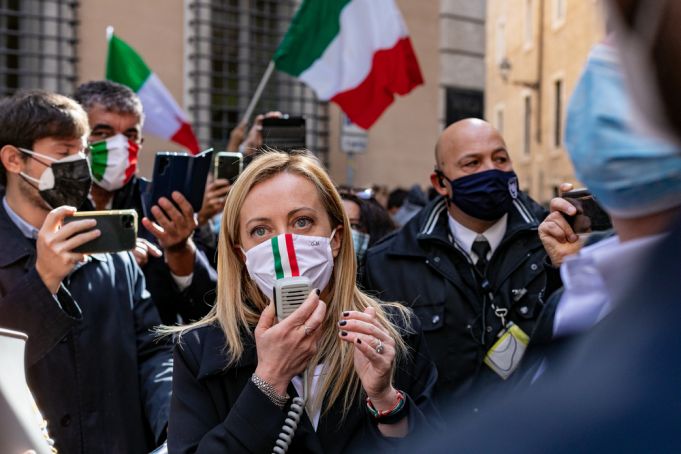
Ph: Giorgia Meloni, Daniele de Gregorio / Shutterstock.com
In 2016, Italy experienced a wave of migrants from North Africa, who were fleeing from terrorism and other human rights threats in their home countries. Salvini’s role as Interior Minister was instrumental in preventing some immigrants from reaching the peninsula, through actions such as the aforementioned port block.
Compared to the League, Fratelli d’Italia, “Brothers of Italy,” is a political group with a definitive brand of moralism tied to their version of nationalism. With roots in the Italian Social Movement, a pro-Mussolini party founded in 1946 with the intention of bringing fascism back to Italy, Fratelli d’Italia is steadfastly Christian. The movement is led by Giorgia Meloni and vehemently opposes immigration, abortion, euthanasia rights, and gay marriage in the name of protecting Italy’s national identity. Though the Italian Constitution has built-in protections against a fascist revival, the movement is considered “post-fascist” because its ideologies are reminiscent of traditional fascism but it exists within the constitutional realm.
On the most extreme spectrum of Italian nationalism is CasaPound, a self-declared neo-fascist group. CasaPound’s symbolism and rhetoric honor Mussolini and pre-World War II fascism, a direct constitutional violation. For example, they use the fascist Roman salute used by Mussolini and Hitler and openly celebrate Mussolini’s legacy. The group rose to public prominence in 2003 when they occupied a building in Rome and made it their headquarters.
By offering housing, free meals, and various assistance services, the group attracted young supporters, branding CasaPound as “hipster fascism.” In 2020, a judge ordered the seizure of the CasaPound headquarters, but the Covid-19 pandemic put a pause on evictions so the seizure has not yet been carried out. As of 2021, CasaPound holds no political seats.
Post-Covid Nationalism: Salvini’s League VS the EU
According to a Dire-Tecnè survey taken in April of 2020, in the midst of the growing Covid-19 pandemic, only 44 percent of Italians wanted to stay in the European Union--42 percent of Italians wanted to leave, and the remainder were undecided. The number of EU supporters drastically dropped from 65 percent only two years prior.
The push for leaving the EU, known as “Italexit,” entered public discourse after talks of Brexit began in the United Kingdom. Italexit has been discussed by far-right groups in Italy, specifically by the League and Fratelli d’Italia, though both groups have carefully sidestepped committing to the initiative. The 2020 increase in support was prompted by what some Italians viewed as the EU’s mishandling of the Covid-19 pandemic. As the pandemic ravaged Italy with no end in sight, many began to resent the EU for its lack of intervention.
In March of 2020, China was sending medical assistance and supplies to Italy far before any of the EU member states, according to Foreign Policy. Accordingly, in the Dire-Tecnè survey, 12 percent of those who supported leaving the EU said they would change their mind if the EU did something “concrete” to assist with the Covid-19 pandemic. And as of 2021, it has.
As of late April, Italy is set to receive a pandemic recovery fund of around 200 billion euro from the EU--the largest recovery package of any EU member country. Amidst the historical backdrop of growing anti-EU sentiment, stimulus support makes a strong case for the benefits of being in the EU.
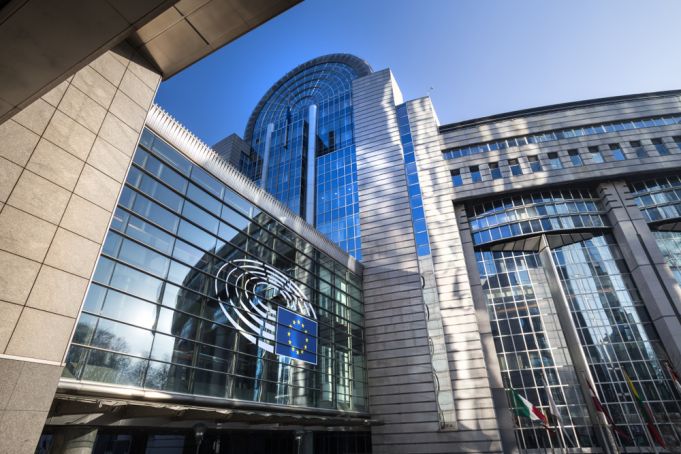
Ph: European parliament building in Brussels. Tobias Arhelger / Shutterstock.com
According to Bloomberg, the package will go towards economic and structural projects, such as creating and repairing infrastructure, economic reform, making the judicial system more efficient, and combatting gender inequality. Under Prime Minister Mario Draghi’s leadership, as Teresa Coratella and Arturo Varvelli point out in an article for the European Council on Foreign Relations, Italy’s pandemic recovery project will give Italy an opportunity to bolster the EU’s power to that of the United States’. This is because Draghi’s government stands in support of the EU and relations with the United States, where previous governments prioritised relationships with China and Russia.
Coratella and Varvelli write, “Italy can contribute to the creation of [an] EU… [that] advance[s] innovative strategies and proposals to tackle global challenges such as covid-19; to make its voice heard in a world of increasing great power competition; and to become an equal geopolitical partner of the US, by working in synergy with its ally.” This vision of Italy as a key player in the EU is reassuring, and something many Italians can be proud of.
In what came as a surprise to many, In February 2021, Salvini declared the League’s support for Draghi’s government. As explained by reporters Crispian Balmer and Giselda Vagnoni for Reuters, Salvini’s decision was a strategic effort to salvage his party’s reputation and relevance. In 2019, the League had become Italy’s most popular political party, winning 34 percent of the vote in the 2019 European parliament elections. In August 2019, Salvini declared that the League no longer supported the government’s leadership, then under former Prime Minister Giuseppe Conte.
Balmer and Vagnoni explain, “Carried away by his success, Salvini quit the coalition, expecting to trigger a national election. It proved a terrible miscalculation.” Presumably, Salvini was hoping for a national election to result in his election as Prime Minister. Instead, the League was replaced in government, and Salvini’s approval ratings rapidly dropped. Now, by agreeing to support Draghi’s government, Salvini has retained his political relevance in exchange for his nationalistic, Euroskeptic agenda. But he hasn’t complained about the exchange. Participating in Draghi’s government will give him some influence over how the stimulus package is spent. And retaining relevance is Salvini’s only chance at one day becoming Prime Minister, his long-term goal.
As professor Roberto D’Alimonte states in Balmer and Vagnoni’s article, “[Supporting Draghi] is a strategic choice that will be consolidated only if things go well. If things go badly, then it is all over. He will return to the nationalist camp.”
In the historical context of the League, Salvini’s flip-flop is not necessarily surprising. The League began in the 1990s as “Lega Nord,” the Northern League, a party committed to European integration and the secession of Northern Italian regions from the Italian State. Described by writer Giovanni de Ghantuz Cubbe for the London School of Economics and Political Science, this stance would drastically evolve over after the EU was created, veering into Euroskepticism from a Northern Italian standpoint and then, as the party grew into the all-accessible “League,” Euroskepticism melded with nationalism. Under Salvini, the League became more Euroskeptic and nationalistic than ever before. de Ghantuz Cubbe writes, “the League’s approach to Europe is not therefore blanket Euroscepticism, but rather one in which the party has always varied its platform depending on the circumstances. This is a trend that has continued under Salvini’s leadership.”
So, it seems that to Salvini, nationalism is strategic. On the other hand, Giorgia Meloni of Fratelli d’Italia has not expressed support for Draghi’s government and seems to be committed to her stance of Euroskepticism. As for the future of nationalism in Italy, much depends on the country’s handling of the Covid-19 pandemic recovery. Historically, nationalism has proven to be a useful political tactic for garnering support against a cause--foreign influence, immigration, and EU participation. If, as scholars Coratella and Varvelli envision, the EU’s stimulus package helps Italy rise to a level of unforeseen bureaucratic efficiency and multilateral power within the EU, nationalistic sentiment may go the way of Salvini’s Euroskepticism.


